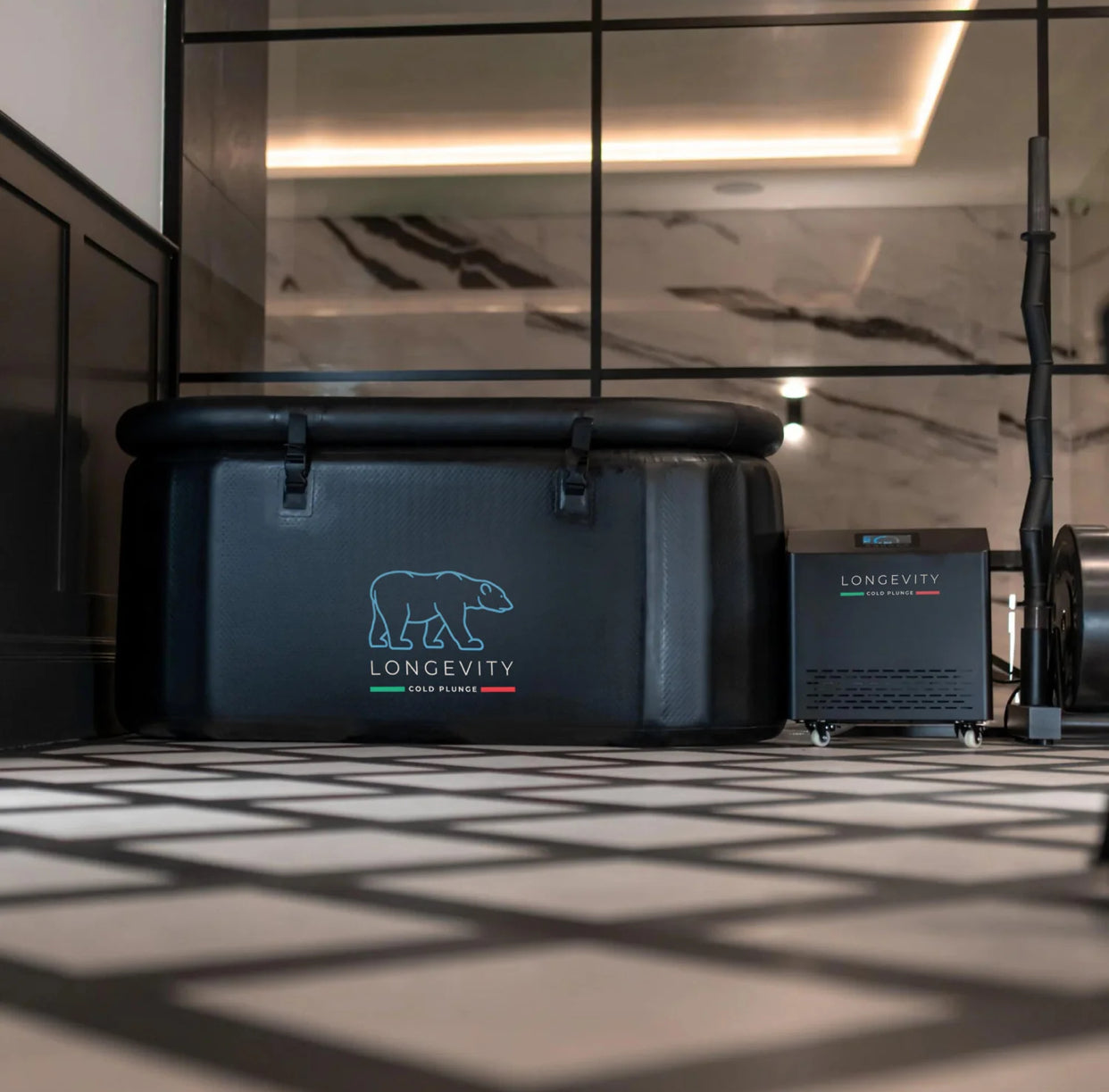Short Answer: Sauna first, then Cold Plunge! Heat up, then cool off for maximum recovery. That Ice Bath jolt after a sauna isn’t torture—it’s therapy! Learn why your Cold Plunge Tub or Ice Bath Tub routine should start steamy and end icy. Keep reading to master the chill!

I. Understanding the Hot and Cold: Sauna and Cold Plunge Basics
1.1 What is a Sauna?
A sauna is a heated room designed to induce sweating and relaxation.
Temperatures often range from 70 to 100 °C.
It encourages detoxification, eases stress and relaxes muscles.
Saunas have been used in many cultures for wellness and recovery.
1.2 Types of Saunas (Traditional, Infrared, Steam Room)
-
Traditional dry saunas use heated rocks and water for bursts of steam.
-
Infrared saunas warm the body directly with infrared light.
-
Steam rooms maintain high humidity with a gentler heat.
Each offers a unique experience but shares core health benefits.
1.3 Physiological Effects of Heat
Heat exposure causes vasodilation, expanding blood vessels.
Heart rate increases, mimicking light exercise.
Muscles relax, joints loosen, and flexibility improves.
Sweating promotes detoxification and stress relief.
1.4 What is a Cold Plunge?
A cold plunge means immersing your body in cold water, typically between 5–15 °C.
It’s often done in a Cold Plunge Tub or Ice Bath Tub to reduce inflammation.
This sharp contrast helps with muscle recovery.
Cold exposure is a powerful wellness tool.
1.5 Alternatives (Ice Baths, Cold Showers)
-
Ice Baths involve tubs filled with ice and water.
-
Cold Showers are accessible at home without special equipment.
-
Cold Plunge Tubs offer precise, consistent cooling with built-in chillers.
1.6 Physiological Effects of Cold
Cold immersion triggers vasoconstriction, narrowing blood vessels.
It helps reduce inflammation and swelling.
Cold activates the sympathetic nervous system, boosting alertness.
Norepinephrine and dopamine levels rise, lifting mood and focus.
1.7 The Science Behind Contrast Therapy
1.7.1 Vasodilation and Vasoconstriction
Heat expands blood vessels (vasodilation).
Cold contracts them (vasoconstriction).
Alternating both creates a pumping effect.
It supports circulation and lymphatic drainage.
1.7.2 Hormonal Response (Endorphins, Norepinephrine, Dopamine)
Contrast therapy triggers endorphins, reducing pain perception.
Cold exposure spikes norepinephrine for sharp focus.
Dopamine levels rise, improving mood and well-being.
II. The Debate: Sauna First or Cold Plunge First?
2.1 Arguments for Sauna Before Cold Plunge
2.1.1 Muscle Relaxation and Preparation
Sauna heat warms and relaxes muscles.
This reduces stiffness and injury risk before the plunge.
It helps ease the transition to cold.

2.1.2 Psychological Readiness for Cold Exposure
Heating up prepares you mentally.
It can make the plunge feel less shocking.
You’re more likely to tolerate cold calmly.
2.1.3 Enhanced Detoxification
Sweating in the sauna helps flush toxins.
The plunge closes pores and invigorates.
This combination supports cleansing and recovery.
2.2 Arguments for Cold Plunge Before Sauna
2.2.1 Immediate Inflammation Reduction
Cold right after exercise reduces acute inflammation.
It helps manage swelling before heat increases circulation.
2.2.2 Boosting Alertness and Focus
Cold first shocks you awake.
It’s ideal for morning routines needing an energy boost.
2.3 Personalising Your Sequence
2.3.1 Considering Your Goals (Athletic Recovery, Mental Clarity, General Wellness)
-
Muscle recovery? Sauna first, then plunge.
-
Mental sharpness? Plunge first, then sauna.
-
General wellness? Experiment to see what suits you.
2.3.2 Listening to Your Body's Response
Notice your comfort levels.
Adjust to your own tolerance.
Your body often knows best.
2.3.3 Experimentation and Adaptation
Test both orders to see how you respond.
Adapt your routine based on training, stress, and recovery needs.
III. Maximising Your Experience: Tips for an Effective Routine
3.1 Duration and Temperature Guidelines
3.1.1 Recommended Sauna Duration and Temperature
10–20 minutes at 70–100 °C is typical.
Stay hydrated before, during, and after.
Watch for signs of overheating.
3.1.2 Optimal Cold Plunge Duration and Temperature
Aim for 2–5 minutes in 5–15 °C water.
Beginners may prefer slightly warmer or shorter sessions.
3.1.3 Recovery Periods Between Sessions
Rest between heat and cold cycles.
Allow your heart rate and breathing to settle.
3.2 Safety Considerations and Precautions
3.2.1 Importance of Hydration
Sweating in the sauna can lead to fluid loss.
Rehydrate before and after sessions.
3.2.2 Medical Conditions to Consult For (Cardiovascular Issues, Hypertension, Diabetes)
Consult a professional if you have heart disease, high blood pressure, or other health issues.
Be cautious with extreme temperatures.
3.2.3 Avoiding Overdoing It: Listening to Your Body's Limits
Don’t push for longer or colder sessions than you can handle.
Stop if you feel faint, dizzy, or overly cold.
3.3 Integrating Hot and Cold Therapy into Your Lifestyle
3.3.1 Frequency of Sessions
2–4 times per week works for most.
Adapt frequency to your own goals.
3.3.2 Combining with Workouts and Rest
Use after exercise for muscle recovery.
Balance with rest days to avoid overloading your system.
3.4 Frequently Asked Questions (FAQs)
Is it safe to do sauna and cold plunge daily?
Yes, if you’re healthy and acclimated. Stay hydrated and listen to your body.
Can I alternate between the sauna and cold plunge multiple times in one session?
Yes, 2–3 cycles are common. End with cold for recovery.
What are the benefits of sauna and cold plunge for recovery and immunity?
Supports circulation, reduces inflammation, aids muscle recovery, and can strengthen immune function through hormetic stress.
Conclusion
Using a sauna and Cold Plunge Tub or Ice Bath Tub together can transform your recovery.
It’s not just about braving the chill—it’s a wellness ritual that helps you feel stronger, calmer, and more resilient.
Takeaways:
Sauna first, then Cold Plunge is the classic approach for maximum recovery.
Stay safe, hydrate, and listen to your body to get the best from your hot and cold routine.






